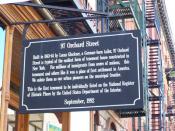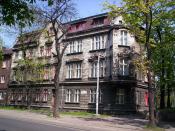Overcrowding in cities
From some points of view, it is unfortunate that there is so great an aggregation of population in the cities of the United States. According to the last census, there were seven cities with a united population exceeding 3,200,000, and fifty-three other cities each with a population at over 25,000; the whole number of persons residing in towns exceeding 25,000 inhabitants being nearly 6,200,000. That is, nearly sixteen percent of our whole population live in cities.
Whatever, then, relates to the housing of people in cities becomes of great importance to the whole country. It should be understood that there are now two distinct kind of cities in the Union, as respects the habitations of the industrial classes - one represented by New-York and Boston, where the working people are crowded into large tenement-houses, and the other, of which Philadelphia, Buffalo and Detroit are examples, where the working man has the inestimable blessing of his own house, hold in fee..
The tenement-house system breeds poverty, disease and vice. It tends steadily to degrade and therefore to impoverish the working classes. Under it, the laborer knows nothing of the best word in the language, the meaning of "home". His children grow up amid throngs of vicious or ill-controlled youth. His rooms are poisoned by fetid gases, and his family are crowded beyond all limits of decency or health. He has no garden of field in which he can work at odd hours and which he can call his own. While the rural laborer plants potatoes or prunes his vines after the day's work, the tenant of the city tenement must go to the liquor-shop for a change from the close room, or to find society. He and his family, living for years in this manner, lose all the...


